After two road trips around Western Canada, I’ve become very interested in Canada’s pre-contact (and contact) history.
So far, I’ve really only learned a smidgen about Aboriginal culture in Canada. And that pretty much extends only to First Nations culture and history, and to be even more specific, to Pacific Coast and Plateau First Nations.
Side note: Canada recognises three distinct Aboriginal groups: First Nations, Inuit (Indigenous peoples of the Arctic) and Métis (mixed-ancestry Indian-European or Inuit-European).

FIRST NATIONS’ CULTURE IN CANADA: WHERE TO LEARN MORE
Similar to Australia, Aboriginal history and culture in Canada is a huge and complex subject, and I’m no expert, I’m just interested in understanding more. Ultimately, of course, I see everything through my very white, very European-influenced and privileged eyes, but I do try and keep them open, and ask lots of questions.
Here are some places I’ve found particularly fascinating on this journey of learning more about Aboriginal people in Canada. Since we haven’t ventured further east than the Rockies, my list is restricted to British Columbia and the Yukon.
Side note: Since about a third of Canada’s First Nations are found in British Columbia, it’s no surprise that this province is so rich in indigenous history.
1. MUSEUM OF ANTHROPOLOGY | VANCOUVER, BC
The Museum of Anthropology at the University of British Columbia in Vancouver is impressive.
It’s pretty well-known as far as Vancouver must-sees go but that doesn’t diminish its impressiveness.
Not only is MoA impressive in terms of its concrete and glass architecture but its collection of ethnographic and cultural artifacts is mind-blowing. The First Nations collections encompass amazing Northwest Coast totem poles, masks, baskets, serving dishes, chests, regalia (including blankets and headdresses), and tons more.
What appealed to me was that a) it’s a research and teaching museum, and b) MoA takes an anthropologically informed approach around acquisition and ownership of objects, including which artifacts it curates publicly and why.
We spent hours learning about various objects and art, both traditional and contemporary.
I found it a bit eye-opening to consider that an artifact, such as a ceremonial garment, doesn’t have intrinsic value. Instead, its value comes from being a connection to living communities today. How artifacts are used and what rights or privileges they represent is more important than the ‘thing’ itself.
This is quite different, obviously, to how art is viewed in Western society where the value of the object is the object itself (just think of famous paintings).
In the end, we ran out of time (after four hours!) and they literally kicked us out. And then there were still the museum grounds to explore…
Plan at least half a day if you’re interested in more than just a cursory glance at totem poles.
REASONS TO VISIT
Take one of the excellent free guided tours, learn about potlatch ceremonies, gaze at the incredibly tall totem poles in the hall, open a myriad of drawers in the Multiversity Galleries for thousands more artifacts, or just wander around the grounds where you’ll find more totem poles and two Haida Houses
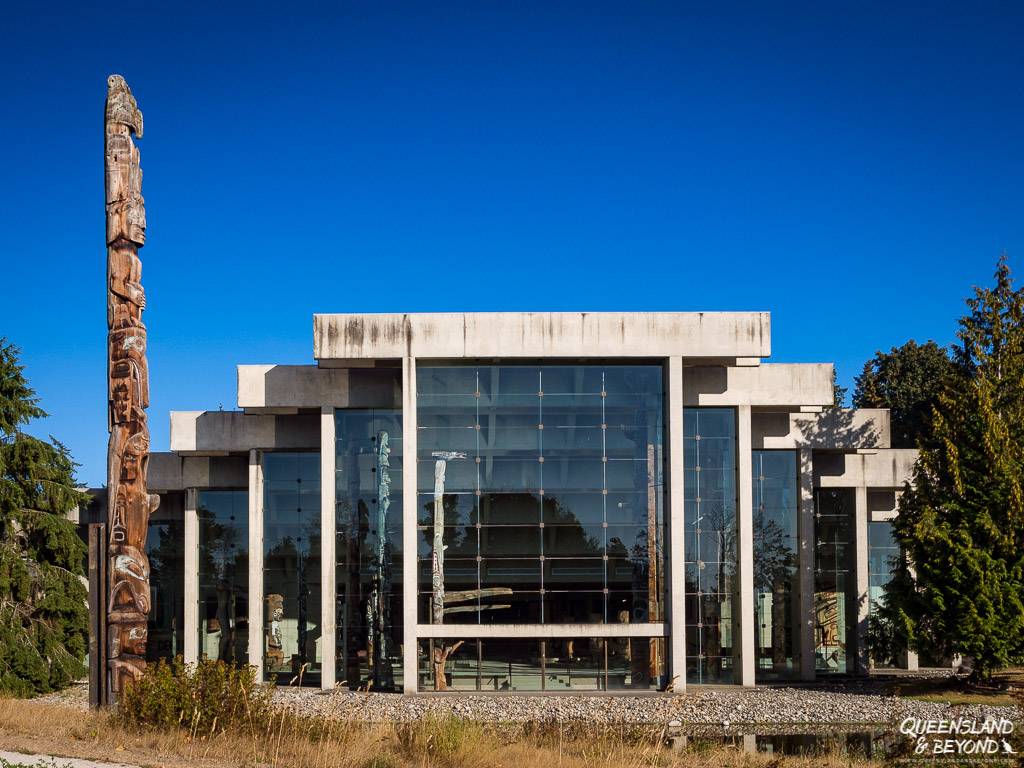
TIPS FOR YOUR VISIT
MoA is located on the Vancouver campus of UBC, easily accessible by bus and well signposted from the bus terminus. Details on how to get there by public transport, admission costs ($18 per adult in Sep 2018), opening hours (10-5 pm, except Mondays in winter) are on the MoA website.
2. MUSEUM OF NORTHERN BRITISH COLUMBIA | PRINCE RUPERT, BC
On our trip in 2016, we had a day in Prince Rupert between our ferry passages up the Inside Passage to the Yukon. And being a rainy day, spending a few hours in the Museum of Northern BC seemed as good an idea as any.
After about a week in Canada, visiting the Museum of Northern BC was my first foray into First Nations culture and history.
Housed in a traditional Northwest longhouse, it’s a formidable museum where you can easily while away a couple of hours.
Even after having been to a few more museums and historical sites, I still think this is one of the most interesting places on Northwest Coast history I’ve been to.
I learned so much about the significance of trading between Pacific Coast people, as well as with the Hudson Bay Company, and even about the impact of the pacific railroad construction.
REASONS TO VISIT
Admire a beautiful cedar longhouse, view artifacts and regalia from Northwest Coast people, including grizzly claw headdresses, and get tons of information on the history of the region, both pre-contact and thereafter

TIPS FOR YOUR VISIT
The museum is super easy to find as it’s located directly on the waterfront in Prince Rupert. For up-to-date information about opening hours (9-5 pm, Tue-Sat) and admission prices (still seems to be $6 per adult), check the Museum of Northern BC online.
3. ‘KSAN HISTORICAL VILLAGE AND MUSEUM | HAZELTON, BC
The Historical Village of ‘Ksan near Hazelton was a bit of a surprise.
‘Ksan is a First Nations (Gitxsan) recreated historical village, and while that might sound a bit touristy at first, it’s run by a First Nations community (along with the adjacent campground) and tours are led by community members.
You can just wander the grounds or visit the museum but to really get something out of your visit, join a tour. As you move from longhouse to longhouse, you’ll learn about their function, various celebrations, the significance of masks and regalia, and hear ancient stories about the raven and other creatures.
Interestingly, the tours are audio-recorded, and in our case, the voice on the recording belonged to our guide’s grandfather. So every time she takes a tour, she hears her grandfather tell stories. I thought that was pretty special, I’d love to have an audio-recording of my grandfather telling stories!
REASONS TO VISIT
Step into an ancient First Nations village (albeit recreated), support a local First Nations tourism and education initiative, have the chance to ask questions, listen to elders telling stories, and try out some local Gitxsan food at the café
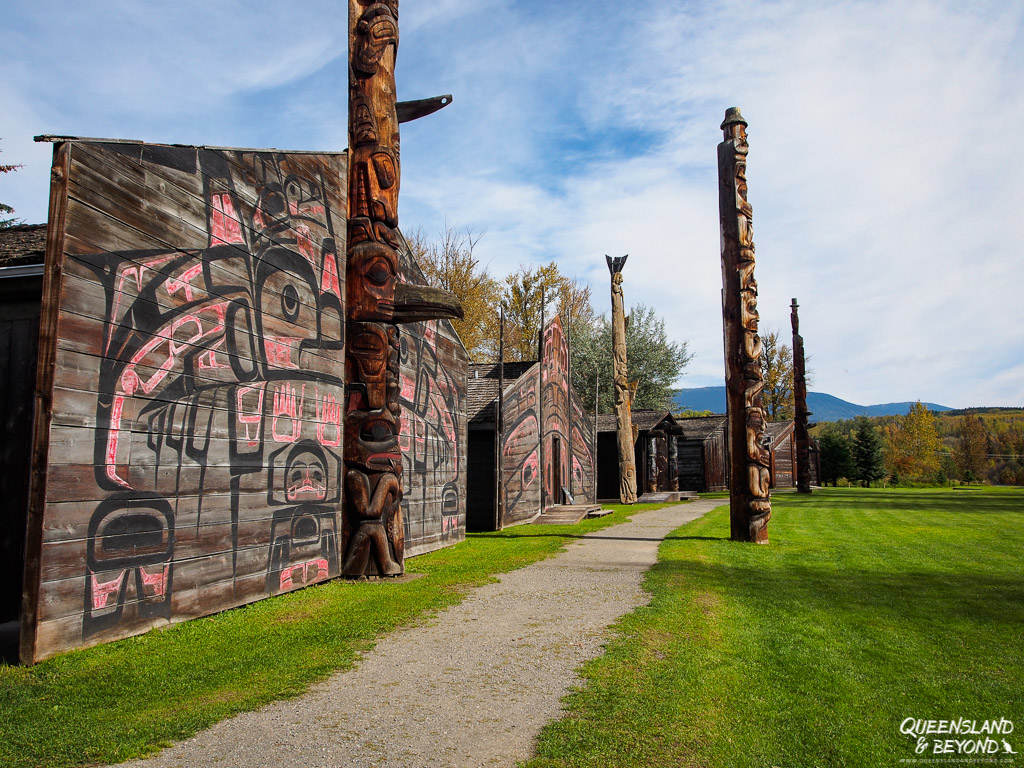
TIPS FOR YOUR VISIT
Located not far off Yellowhead Highway 16, it won’t be much of a detour if you’re travelling that way. More details on the location and (seasonal) opening hours (10-5 pm May-Oct) are on the ‘Ksan website. Admission was $15 per adult in 2016.
4. KLUANE MUSEUM OF HISTORY | BURWASH LANDING, YUKON
The Kluane Museum of History in Burwash Landing makes for a neat road trip stop if you’re travelling on the Alaska Highway in the Yukon.
I wouldn’t count it as one of my must-dos in the Yukon but we found it to be a great little museum that educated us a bit more on the Southern Tutchone people and local history. Plus they’ve got some awesome stuffed animal exhibits if that’s your kind of thing (it is mine).
The gift shop sells local indigenous crafts and I debated for ages whether I should buy some fur-trimmed moccasins (but bringing animal products into Australia can be a bit of hassle so I didn’t…). Whilst I conducted this inner monologue, the husband got the chance to chat with the lovely indigenous staff, always a bonus in his book.
REASONS TO VISIT
Support a local museum, learn about First Nations in the Yukon/Alaska, and view some pretty cool wildlife dioramas
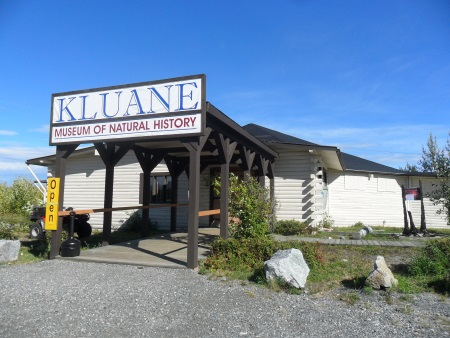
TIPS FOR YOUR VISIT
Find more information, including (seasonal) opening hours and admission costs ($5 per adult in 2016) on the Kluane Museum website.
5. U’MISTA CULTURAL CENTRE | ALERT BAY, BC
Located on a tiny island just off the coast of North Vancouver Island, Alert Bay is a First Nations community. There is so much history and culture to be discovered on this tiny island so you’ll want at least half a day to soak it all in.
We had horrendous weather while we were on the island so didn’t end up exploring much beyond the U’mista Cultural Centre and taking a very quick drive past a few other sights.
U’mista cares in particular about preserving the cultural heritage of the Kwakwa̱ka̱ʼwakw First Nations, a group of tribes found around northern and central Vancouver Island and along the adjacent mainland.
Their Potlatch Gallery is extensive and houses some fantastic regalia (masks, garments, blankets and other artifacts). These artifacts are now on display here after having been returned to their rightful owners following long years of cultural repression.
If you know nothing about the ‘potlatch’ (meaning ‘to give’) ceremony, U’mista would be a great place to start.
REASONS TO VISIT
Visit one of the longest-operating First Nations cultural facilities in BC, learn about the meaning behind the different types of masks and what potlatch is all about, or simply enjoy a (free) cup of tea or coffee while watching one of the many documentaries on the Kwakwa̱ka̱ʼwakw (or one of the First Nations cartoons!)

TIPS FOR YOUR VISIT
To learn more about the potlatch, including what it is and why it was banned for over 60 years, visit the virtual U’mista Museum. For opening hours (open year-round, Tue-Sat, 9-5 pm), admission costs ($12 per adult in 2018) and what exhibitions or tours are available, visit U’mista Cultural Centre.
6. COPPER SUN JOURNEYS | BELLA COOLA, BC
If museums or cultural centres aren’t your thing, try a walking tour with Copper Sun Journeys in central BC.
Copper Sun Journeys are located in the stunning Bella Coola Valley, where they offer petroglyphs (rock carvings) and totem poles walking tours. Guides are local Nuxalk community members so you get a real insight into how the land and sea are interwoven into the culture of the Nuxalk First Nation.
We didn’t have time for both tours, and so ended up going on the 2-hour Petroglyph Tour in the mountains. At $100 per person, it’s definitely not cheap but our guide Clyde was brilliant, and you’re supporting a local, First Nations-owned tourism business (keep in mind that their tourism season is also very short).
The petroglyphs were amazingly detailed, from showing a bear with salmon in his mouth, to faces, birds (including the raven), a radiating sun, and others. I was totally mesmerised by Clyde’s narration of the story about how the raven ate the sun (and all the others he told).
These sites should only be explored on a guided walking tour as they’re sacred and of great spiritual significance to the community. I took a fair few photos but Clyde asked for photos not to be shared online given their sacredness and to protect them for future generations. To see some photos of the petroglyphs, have a look on their website.
Our guide shared an incredible wealth of knowledge with us but my fingers couldn’t scribble notes as fast as I wanted in the cold weather! Some research, including Clyde’s own, suggests that the Nuxalk may be related to the Maori in New Zealand as some of the symbols found here are also found in New Zealand. Crazy, right?!

Another option to learn more about the Nuxalk and enjoy the spectacular scenery would be to go on a rafting tour down the Bella Coola River with Copper Sun Journeys.
In September, your chances of spotting a grizzly or two should also be pretty good. We were lucky enough to spot a mumma bear with her cub hunting for salmon!
REASONS TO VISIT
Learn about the cultural heritage of the Nuxalk directly from the Nuxalk First Nation, see sacred petroglyph sites, listen to ancient creation stories and songs, chat with your guide and ask questions as you float down the Bella Coola River or walk around town
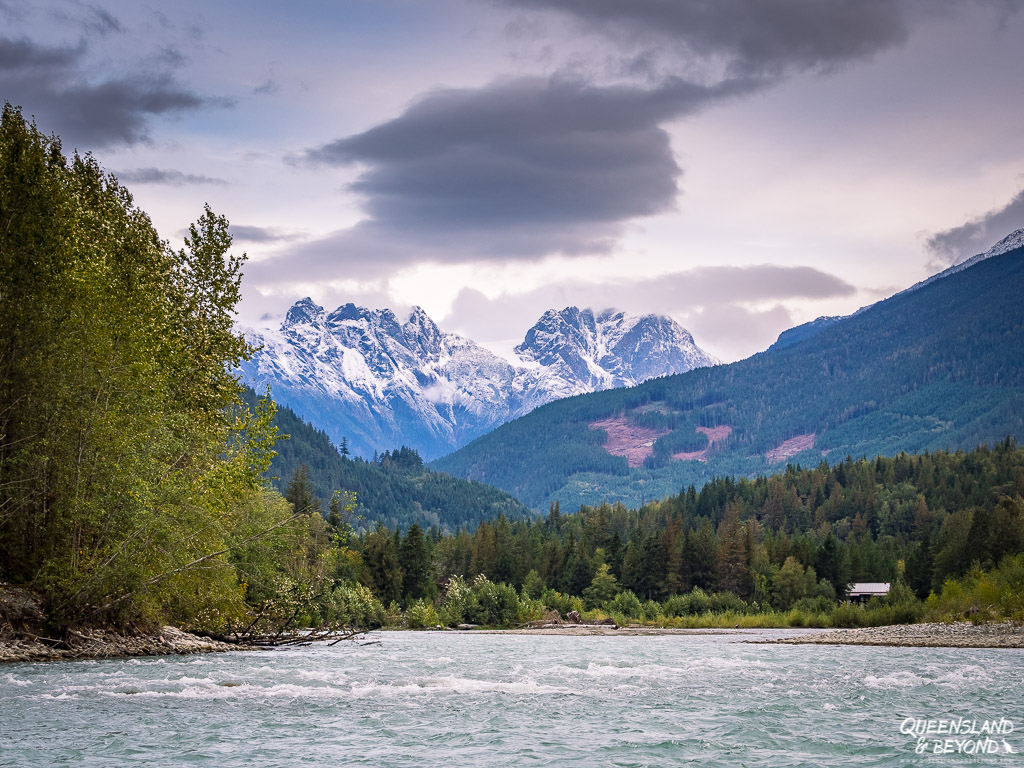
TIPS FOR YOUR VISIT
For more information on the tours, including when they’ll open for the season, check out Copper Sun Journeys.
INDIGENOUS SITES STILL ON MY LIST
Canada has tons of historical sites, cultural centres and museums to offer if you’re keen to learn more about First Nations history and culture, pre- and post-contact. Places I’d love to visit one day include:
- Dänojà Zho Cultural Centre in Dawson City, Yukon
- Teslin Tlingit Heritage Centre in Teslin, Yukon
- Haida Heritage Centre, Haida Gwaii, BC
- Xat’sull Heritage Village, Williams Lake, BC
- Head-Smashed-In Buffalo Jump, Fort MacLeod, Alberta
You might also want to take a look at Indigenous Tourism BC for a list of indigenous-owned and operated places to stay and eat at, and for things to do, including cultural, wildlife and adventure tours.
Leave a comment and tell me which places you’ve visited or would like to visit, and what sites I should add to my list.
PIN ME!






























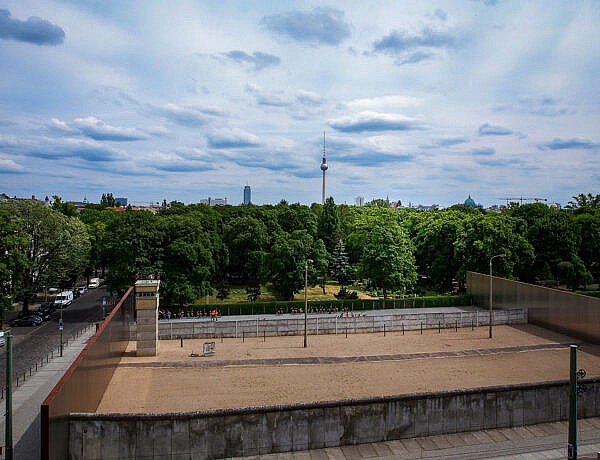


11 Comments
u1043431
30 October 2018 at 8:15 AMThanks so much for taking the time to share your insight into Canada’s Indigenous culture. The only problem now is that it makes me want to jump on a plane and visit!!! Oh and stunning photos as usual. Anita
Kati
1 November 2018 at 10:12 PMHey Anita,
Haha, always good making you want to jump on a plane – we can jump together! 😀 Thanks heaps for reading!!! 😀 😀
LC
1 November 2018 at 10:40 AMI know nothing about Canada’s Indigenous culture either (although I’ve spent a total of around six days in the country, so there’s a lot of Canada left to investigate on my list) and would like to know more. Your posts about Yukon have made me really want to travel to that province. I’d love to visit the Kluane Museum as stuffed animals are my jam too. I don’t know why.
Kati
5 November 2018 at 4:18 PMWell, after a total of six days, you should know it all, right?! 😉 The Yukon is amazing, especially if you like road trips and don’t mind the odd wildlife encounter… Yes, I can totally see you at the Kluane Museum – it’s quite small but you’d probably love all the stuffed mountain goats and squirrels and beavers and …
Spophy
25 November 2018 at 6:52 AMDie Sachen sehen alle ziemlich cool aus, v.a. die bemalten Schuppen (?). Am besten finde ich aber, dass ihr nach v i e r Stunden rausgeschmissen wurdet xD Haben sie dann zugemacht oder dachten sie, ihr kundschaftet was für einen Diebstahl aus? xD Außerdem frage ich mich, zu welchem Anlass du eigentlich die Mokkasins tragen wolltest ;D
Kati
25 November 2018 at 2:10 PMJa, die bemalten Long Houses sehen wirklich toll aus. Haha, ja, im Ernst mit den 4 Stunden! 😀 Die haben um 17 Uhr zugemacht und wir wurden sehr hoeflich aber unmissverstaendlich gebeten, doch jetzt mal zu gehen, haha…
Das war genau das Problem mit dem Mokkasins – wie krieg ich sie ins Land und wann genau trage ich sie? Zwei Mal im Jahr, wenn es dann doch mal 15 Grad sind????
Spophy
26 November 2018 at 12:36 AMGut, dass du widerstehen konntest 🙂
Kati
26 November 2018 at 4:52 PMHaha, genau. 😀
Cindy
16 January 2020 at 2:16 PMI’ve been to a few on your bucket list and can remark. Teslin Tlingit Heritage Centre is well worth the visit. There is a museum with items made from the locals and if you are there on the right day you can meet and talk with carvers. The workmanship is amazing.
If you’re in Haida you need to see the Haida Heritage Centre but just being on the island itself has loads of history. From there you also need to drive up to Masset and just driving through the small communities. Locals are very friendly and if you want to buy local art you can find them in stores or museums or buy driving up streets you will see Master Carver signs on the lawns and just knock on their door. You can see their work and put in an order to be made. Awesome way to meet your carver and have a say in what they design.
Xat’sull Heritage Village is just outside of where I live and work. I have been there once with a class of mine and the classroom tour we had was amazing. However, we tried to book last year and they did not respond back to us. The gentlemen who did the tour is an elder and had two of his grandkids help him. He explained it’s very difficult to get help from other community members. If you can get someone to show you around, please do. Another suggestion that our school used instead of this location was Historic Hat Creek in Cache Creek, BC. There you can see the Gold Miners site and beside is the First Nations site belonging to the Shuswap people. We’ve taken our classes there many times and love the tours.
I also suggest if you’re driving north in BC is to stop in Kitwanga and go to the Gitanyow reserve to see ancient Kitwancool Totem Poles. It was an amazing site to walk around. Unfortunately the museum was not open when we were there. But there is a lot of history.
Hope this helps
Cale
16 September 2022 at 4:11 AMThis is a great read. Thank you for sharing. May I ask where the website banner photograph of the totem pole with the winding road and bright Fall foliage was taken? Thank you.
Kati
16 October 2022 at 10:56 AMHi Cale,
Sorry for the slow response, have been away. 🙂 That photo was taken quite a few years ago now, and if I remember right was at the ‘Ksan Historical Village (I think this might have been the loop around the parking area 😀 ). It was mid-September when we were there, and the foliage was stunning!